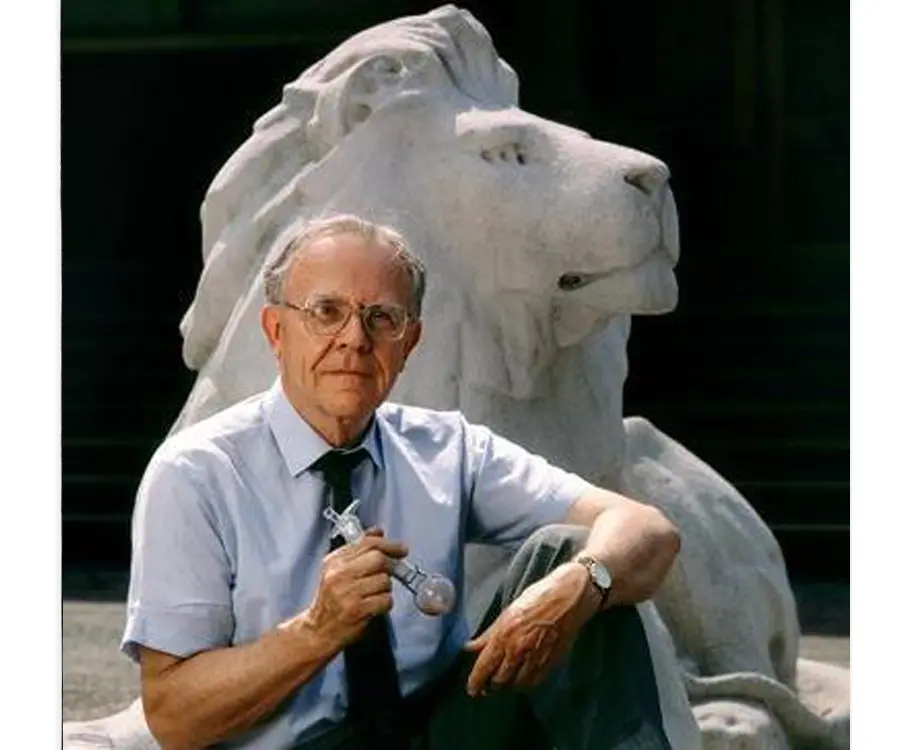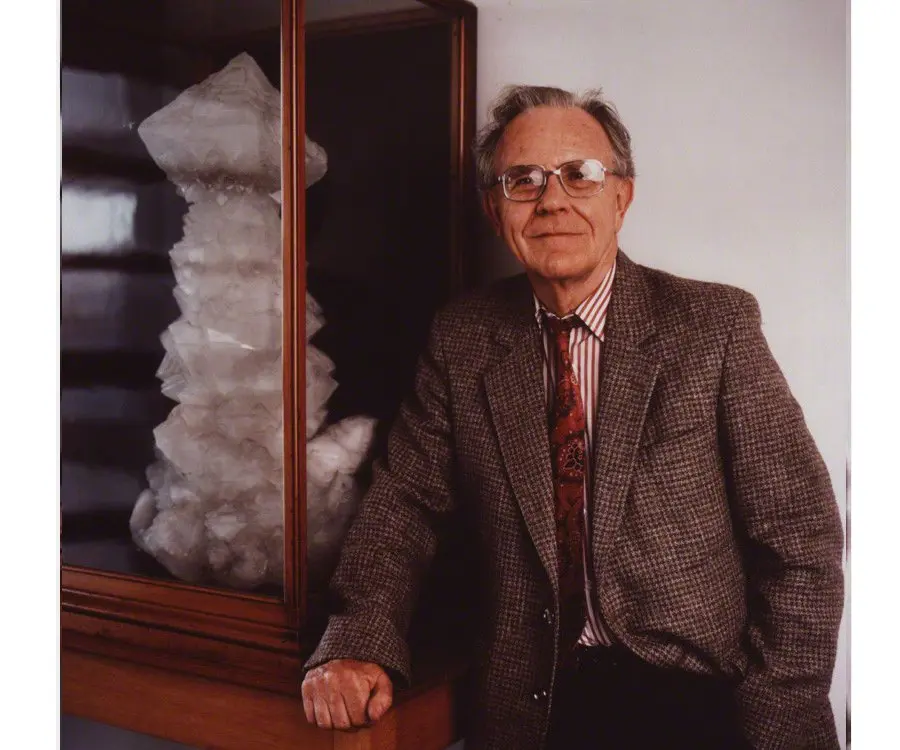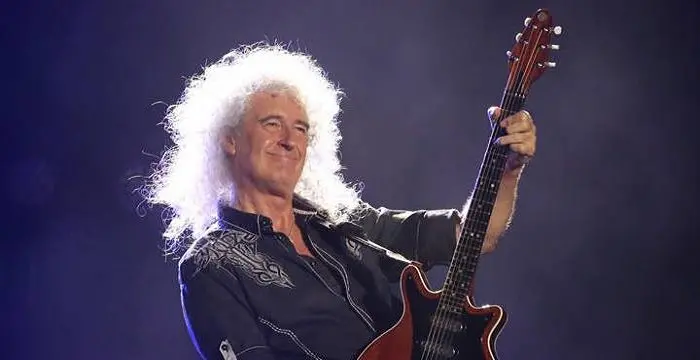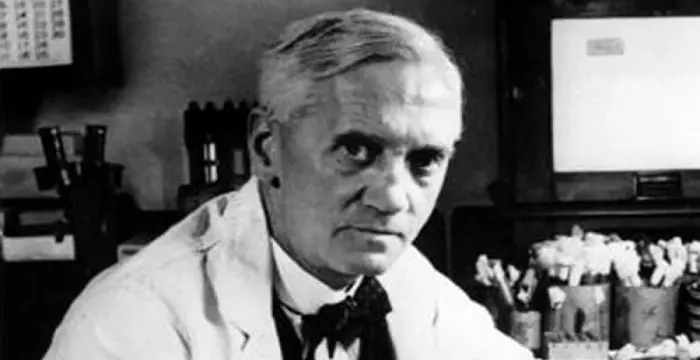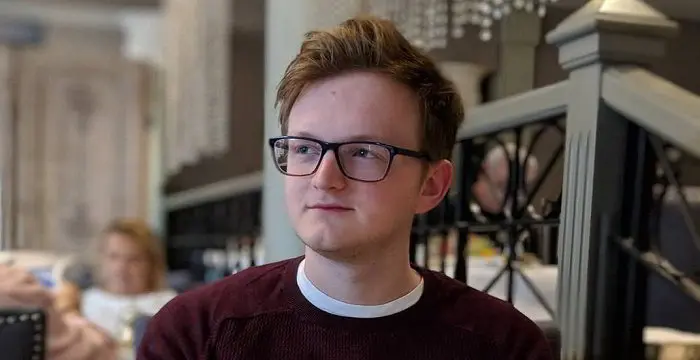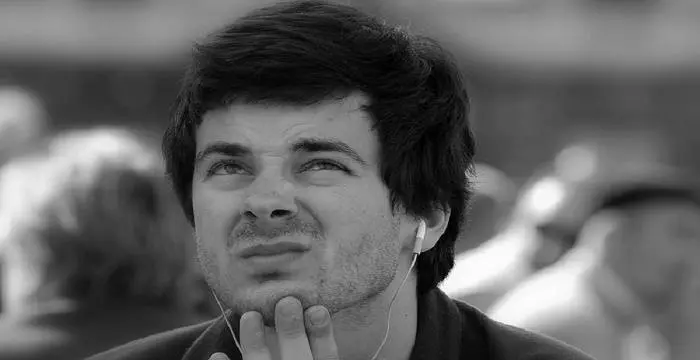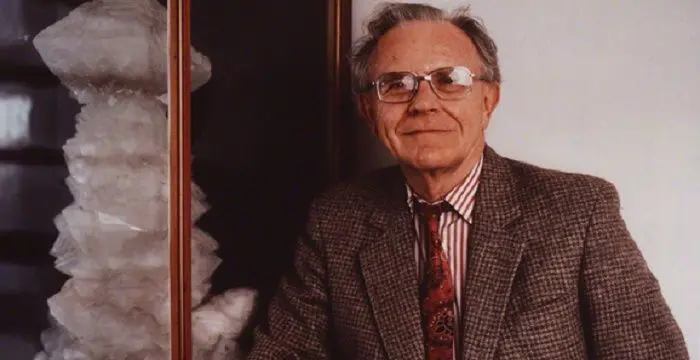
Geoffrey Wilkinson - Chemists, Birthday and Facts
Geoffrey Wilkinson's Personal Details
Sir Geoffrey Wilkinson was an English chemist and educator who was jointly awarded the ‘Nobel Prize in Chemistry’ in 1973
| Information | Detail |
|---|---|
| Birthday | July 14, 1921 |
| Died on | September 26, 1996 |
| Nationality | British |
| Famous | Imperial College London, Scientists, Chemists |
| Spouses | Lise Solver |
| Known as | Sir Geoffrey Wilkinson |
| Childrens | Anne, Pernille |
| Universities |
|
| Notable Alumnis |
|
| Birth Place | Todmorden, West Riding of Yorkshire, England |
| Gender | Male |
| Father | Harold Wilkinson |
| Mother | Ruth Crowther |
| Sun Sign | Cancer |
| Born in | Todmorden, West Riding of Yorkshire, England |
| Famous as | Chemist |
| Died at Age | 75 |
// Famous Scientists
Juliane Koepcke
Juliane Koepcke is a German-Peruvian biologist, who was the lone survivor among the 92 passengers and crew of the ill-fated LANSA Flight 508 that crashed in the Peruvian rainforest on 24 December 1971. Know more about her life in this biography.
Henry Cavendish
Henry Cavendish was a theoretical chemist and physicist, renowned for discovery of hydrogen and calculation of the mass of earth. To know more about his childhood, profile, timeline and career read on
Konstantin Tsiolkovsky
Konstantin Tsiolkovsky was a Russian rocket scientist and a pioneer of astronautics. This biography provides detailed information about his childhood, family, personal life, career, achievements, etc.
Geoffrey Wilkinson's photo
Who is Geoffrey Wilkinson?
Sir Geoffrey Wilkinson was an English chemist and educator who was jointly awarded the ‘Nobel Prize in Chemistry’ in 1973 along with German chemist Ernst Otto Fischer for their independent but related pioneering work in metallocenes and other aspects in the field of organometallic chemistry. Through his investigations on the products of atomic fission reactions he was able to discover several new isotopes. He successfully deduced the structure of the newly developed synthesized compound which was called dicyclopentadienyl iron (at present called ferrocene) and displayed that the compound is composed of two carbon rings each of five sides, bound on opposite sides of an iron atom thus forming an organometallic molecule. He carried on with his research in this field and synthesized many other organometallic compounds, also known as ‘sandwich compounds’. The study of metal-to-hydrogen bonding by Wilkinson, especially the discovery of his homogeneous hydrogenation catalyst for alkenes, known as the Wilkinson's Catalyst composed of a rhodium metal complex with the metal center being linked to three large phosphine ligands proved to be of great significance in the field of organic and inorganic chemistry and play a vital role in industrial applications. He worked at the ‘Atomic Energy Project’ in Canada and taught at the ‘Harvard University’, ‘University of California’ at Berkeley, ‘Massachusetts Institute of Technology’ and ‘Imperial College, London. Apart from ‘Nobel Prize’, he received several awards including ‘ACS Award in Inorganic Chemistry’ (1965), the ‘Royal Medal’ (1981) and the ‘Davy Medal’ (1996) among others. In 1965 he was elected a ‘Fellow of the Royal Society’ (FRS) and in 1976 he was honored with the title of Knight.
// Famous Imperial College London
Brian May
Brian May is a legendary and prolific guitarist from the famous rock band ‘Queen’. Explore this biography to learn more about his childhood, life, works, achievements and timeline.
Roger Bannister
Roger Bannister is an English doctor, academic and a former athlete. Check out this biography to get detailed information on his childhood, life, career, achievements and timeline.
Alexander Fleming
Alexander Fleming was a Scottish biologist and pharmacologist who discovered enzyme lysozyme and antibiotic penicillin. This biography of Alexander Fleming profiles his childhood, life, research, discoveries, achievements and timeline.
Childhood & Early Life
He was born on July 14, 1921, in a village called Springside, located near Todmorden, in the West Riding of Yorkshire to Harold Wilkinson and his wife Ruth Crowther as their eldest child among three.
His grandfather, who migrated from Boroughbridge to Yorkshire in around 1880 and his father were master house painters and decorators. His mother was a weaver who worked in local cotton mills.
In-laws of his eldest maternal uncle were owners of a small chemical company who made Epsom and Glauber's salts for the pharmaceutical industry. It was through his uncle, whom he accompanied on several visits to chemical companies, he developed interest in the field of chemistry.
He began his studies in the local council primary school and after receiving a County Scholarship in 1932, he joined the ‘Todmorden High School’, a comprehensive school located in the town of Todmorden in West Yorkshire.
Although a small school, it held an amazing record of academic achievements and produced 2 Nobel Laureates in a span of 25 years. He came under the guidance of the physics teacher who also taught Sir John Cockroft, a noted English Physicist, however Wilkinson never showed much interest in the subject.
He obtained a Royal Scholarship to study at the ‘Imperial College’, London in 1939 and earned a BS in Chemistry in 1941 at a time when the ‘Second World War’ was in full swing. As many strategically significant scientific research works were being conducted during wartime, he was instructed to carry on with some research work with Professor H.V.A. Briscoe as his supervisor.
Career
He joined Professor Friedrich Paneth, an Austria-born British chemist, in late 1942 when the latter was recruiting young chemists for the Atomic Energy Project. In January 1943 he was sent to Canada where he worked on the Atomic Energy Project first at the ‘Université de Montréal’ in Montreal and then in the ‘Chalk River Laboratories’ in Deep River, Renfrew County, Ontario. He worked in this project till 1946 which included the war-time atomic research program of UK, the Tube Alloys nuclear project.
Post war in 1946 he applied and was accepted by Professor Glenn T. Seaborg, a noted American chemist, at the ‘University of California’, Berkley where he remained a scholar in nuclear chemistry till 1950. There he mostly remained occupied working on nuclear taxonomy. He applied a type of particle accelerator called cyclotron of the Radiation Laboratory and made several deficient isotopes. According to Professor Seaborg the artificial isotopes that were made by Wilkinson, around eighty nine, were more than any other person.
In 1950 he joined ‘Massachusetts Institute of Technology’ as a Research Associate. There he focussed his research work on his original interest that he had since his student life, transition metal complexes of ligands like olefins and carbon monoxide.
His nuclear background landed him a job at the ‘Harvard University from September 1951 to December 1955 as an Assistant Professor. While he began his research on olefin complexes, he also carried on with a few nuclear researches on excitation functions for protons in cobalt.
A publication of early 1952 regarding a newly developed synthesized compound called dicyclopentadienyl iron (at present called ferrocene) aroused his interest. He endeavoured and successfully deduced the structure of the synthesized compound and showed that it is composed of two carbon rings each of five sides, bound on opposite sides of an iron atom thus forming an organometallic molecule. Moving ahead he conducted further research in this field and synthesized many other organometallic compounds.
He took a sabbatical of nine months when he worked at Professor Jannik Bjerrum's laboratory in Copenhagen as a John Simon Guggenheim Fellow.
He was appointed by the ‘Imperial College’, London, to the chair of Inorganic Chemistry in June 1955, a position he took up in January 1956 and served for over three decades. There he mostly dedicated his research on complexes of transition metals and focussed his interest on complex chemistry of rhenium, rhodium and ruthenium and in compounds of unsaturated hydrocarbons among others. In 1988 he became professor emeritus.
His study of the metal-to-hydrogen bonding led him develop homogeneous hydrogenation catalyst for alkenes, chlorotris (triphenylphosphine) rhodium(I), a coordination compound with chemical formula RhCl(PPh3)3 (where Ph stands for phenyl), also referred as Wilkinson's Catalyst. It is composed of a rhodium metal complex with the metal center being linked to three large phosphine ligands.
He continued to work as emeritus professor in the ‘Imperial College’, London in the lab built for him by the firm ‘Johnson Matthey’.
He penned down many textbooks with his former doctoral student F. Albert Cotton, which included ‘Basic Inorganic Chemistry’ (1955), ‘Advanced Inorganic Chemistry’ (1962) and ‘Chemistry: An Investigative Approach’ (1970). In 1987 the ‘Pergamon Press’ published the 1st edition of ‘Comprehensive Coordination Chemistry: The Synthesis, Reactions, Properties & Applications of Coordination Compounds’ with Wilkinson, Jon A. McCleverty and Robert D. Gillard as contributors.
Awards & Achievements
He jointly received the ‘Nobel Prize in Chemistry’ in 1973 with German chemist Ernst Otto Fischer.
The ‘University of Bath’ conferred upon him an honorary doctorate of science in 1980.
Wilkinson remained member, foreign member and associate of many prestigious organisations. He was a foreign member of ‘Royal Danish Academy of Sciences’ (1968), ‘American Academy of Arts and Sciences’ (1970) and ‘American Chemical Society’ (1976) and a Foreign Associate of ‘National Academy of Sciences’ (1975).
Personal Life & Legacy
He married Lise Solver, a physiologist in 1952. The couple was blessed with two daughters, Anne and Pernille.
On September 26, 1996, he succumbed to a heart attack in London, England at the age of 75.
Trivia
In October 2009, the ‘Imperial College’, London, as a mark of honor, designated a new hall of residence after him.
// Famous Chemists
Henry Cavendish
Henry Cavendish was a theoretical chemist and physicist, renowned for discovery of hydrogen and calculation of the mass of earth. To know more about his childhood, profile, timeline and career read on
Walter Kohn
Nobel Laureate Walter Kohn was an Austrian-born American theoretical chemist and physicist. Check out this biography to know about his childhood, life, achievements, works & timeline.
Jabir Ibn Hayyan
Jabir Ibn Hayyan was a medieval era polymath. Check out this biography to know about his life, works and achievements.
Geoffrey Wilkinson's awards
| Year | Name | Award |
|---|---|---|
Other | ||
| 0 | FRS (1965) | |
| 0 | Nobel Prize in Chemistry (1973) | |
| 0 | Royal Medal (1981) | |
| 0 | Davy Medal (1996) | |
Geoffrey Wilkinson biography timelines
- // 1880His grandfather, who migrated from Boroughbridge to Yorkshire in around 1880 and his father were master house painters and decorators. His mother was a weaver who worked in local cotton mills.
- // 14th Jul 1921He was born on July 14, 1921, in a village called Springside, located near Todmorden, in the West Riding of Yorkshire to Harold Wilkinson and his wife Ruth Crowther as their eldest child among three.
- // 1932He began his studies in the local council primary school and after receiving a County Scholarship in 1932, he joined the ‘Todmorden High School’, a comprehensive school located in the town of Todmorden in West Yorkshire.
- // 1939 To 1941He obtained a Royal Scholarship to study at the ‘Imperial College’, London in 1939 and earned a BS in Chemistry in 1941 at a time when the ‘Second World War’ was in full swing. As many strategically significant scientific research works were being conducted during wartime, he was instructed to carry on with some research work with Professor H.V.A. Briscoe as his supervisor.
- // 1946 To 1950Post war in 1946 he applied and was accepted by Professor Glenn T. Seaborg, a noted American chemist, at the ‘University of California’, Berkley where he remained a scholar in nuclear chemistry till 1950. There he mostly remained occupied working on nuclear taxonomy. He applied a type of particle accelerator called cyclotron of the Radiation Laboratory and made several deficient isotopes. According to Professor Seaborg the artificial isotopes that were made by Wilkinson, around eighty nine, were more than any other person.
- // 1950In 1950 he joined ‘Massachusetts Institute of Technology’ as a Research Associate. There he focussed his research work on his original interest that he had since his student life, transition metal complexes of ligands like olefins and carbon monoxide.
- // Sep 1951 To Dec 1955His nuclear background landed him a job at the ‘Harvard University from September 1951 to December 1955 as an Assistant Professor. While he began his research on olefin complexes, he also carried on with a few nuclear researches on excitation functions for protons in cobalt.
- // 1952A publication of early 1952 regarding a newly developed synthesized compound called dicyclopentadienyl iron (at present called ferrocene) aroused his interest. He endeavoured and successfully deduced the structure of the synthesized compound and showed that it is composed of two carbon rings each of five sides, bound on opposite sides of an iron atom thus forming an organometallic molecule. Moving ahead he conducted further research in this field and synthesized many other organometallic compounds.
- // 1952He married Lise Solver, a physiologist in 1952. The couple was blessed with two daughters, Anne and Pernille.
- // 1973He jointly received the ‘Nobel Prize in Chemistry’ in 1973 with German chemist Ernst Otto Fischer.
- // 1980The ‘University of Bath’ conferred upon him an honorary doctorate of science in 1980.
- // 26th Sep 1996On September 26, 1996, he succumbed to a heart attack in London, England at the age of 75.
- // Oct 2009In October 2009, the ‘Imperial College’, London, as a mark of honor, designated a new hall of residence after him.
// Famous British peoples
Wentworth Miller
Wentworth Miller is an American actor and screenwriter who achieved recognition for his role in the TV series ‘Prison Break’.
Sophie Reade
Sophie Victoria Reade is a British model and reality show star. Let’s take a look at her family and personal life, including her age, birthday, boyfriends, and some interesting facts.
Josh Temple
Check out all that you wanted to know about Josh Temple (Slogoman), the famous British YouTube Personality; his birthday, his family and personal life, his girlfriends, fun trivia facts and more.
Yammy Xox
Check out all that you wanted to know about Yammy Xox, the famous British YouTube Personality; her birthday, her family and personal life, her boyfriends, fun trivia facts and more.
Grian
Grian is an English YouTube gamer and social media influencer. Check out this biography to know about his birthday, childhood, family life, achievements and fun facts about him.
Benjamin Atkinson
Benjamin Atkinson is the son of the world-renowned British actor and comedian, Rowan Atkinson. Check out this biography to know about his childhood, family, personal life, including his age, birthday, etc.
Geoffrey Wilkinson's FAQ
What is Geoffrey Wilkinson birthday?
Geoffrey Wilkinson was born at 1921-07-14
When was Geoffrey Wilkinson died?
Geoffrey Wilkinson was died at 1996-09-26
Where was Geoffrey Wilkinson died?
Geoffrey Wilkinson was died in London, England
Which age was Geoffrey Wilkinson died?
Geoffrey Wilkinson was died at age 75
Where is Geoffrey Wilkinson's birth place?
Geoffrey Wilkinson was born in Todmorden, West Riding of Yorkshire, England
What is Geoffrey Wilkinson nationalities?
Geoffrey Wilkinson's nationalities is British
Who is Geoffrey Wilkinson spouses?
Geoffrey Wilkinson's spouses is Lise Solver
Who is Geoffrey Wilkinson childrens?
Geoffrey Wilkinson's childrens is Anne, Pernille
What was Geoffrey Wilkinson universities?
Geoffrey Wilkinson studied at Imperial College London, Imperial College London
What was Geoffrey Wilkinson notable alumnis?
Geoffrey Wilkinson's notable alumnis is Imperial College London
Who is Geoffrey Wilkinson's father?
Geoffrey Wilkinson's father is Harold Wilkinson
Who is Geoffrey Wilkinson's mother?
Geoffrey Wilkinson's mother is Ruth Crowther
What is Geoffrey Wilkinson's sun sign?
Geoffrey Wilkinson is Cancer
How famous is Geoffrey Wilkinson?
Geoffrey Wilkinson is famouse as Chemist



